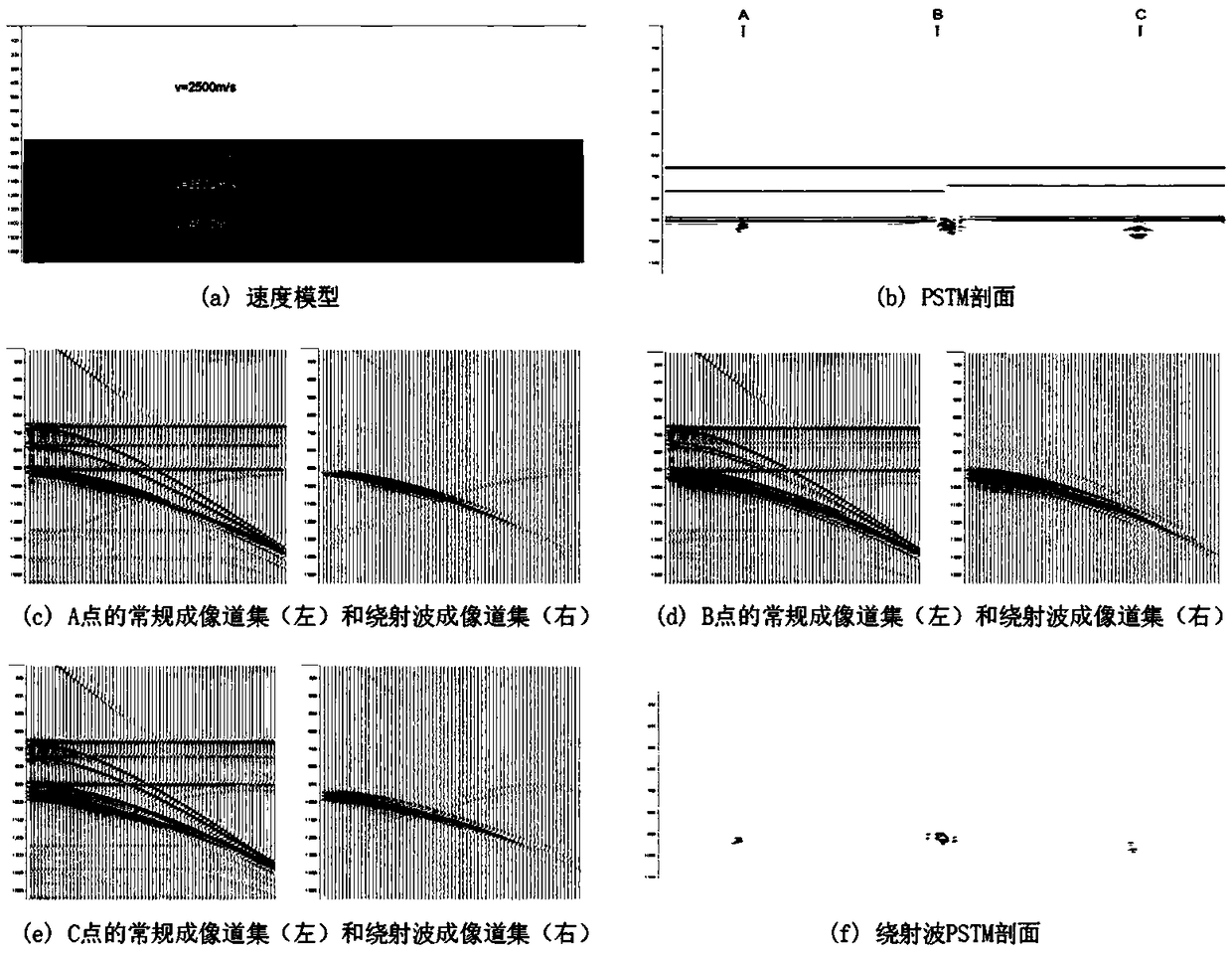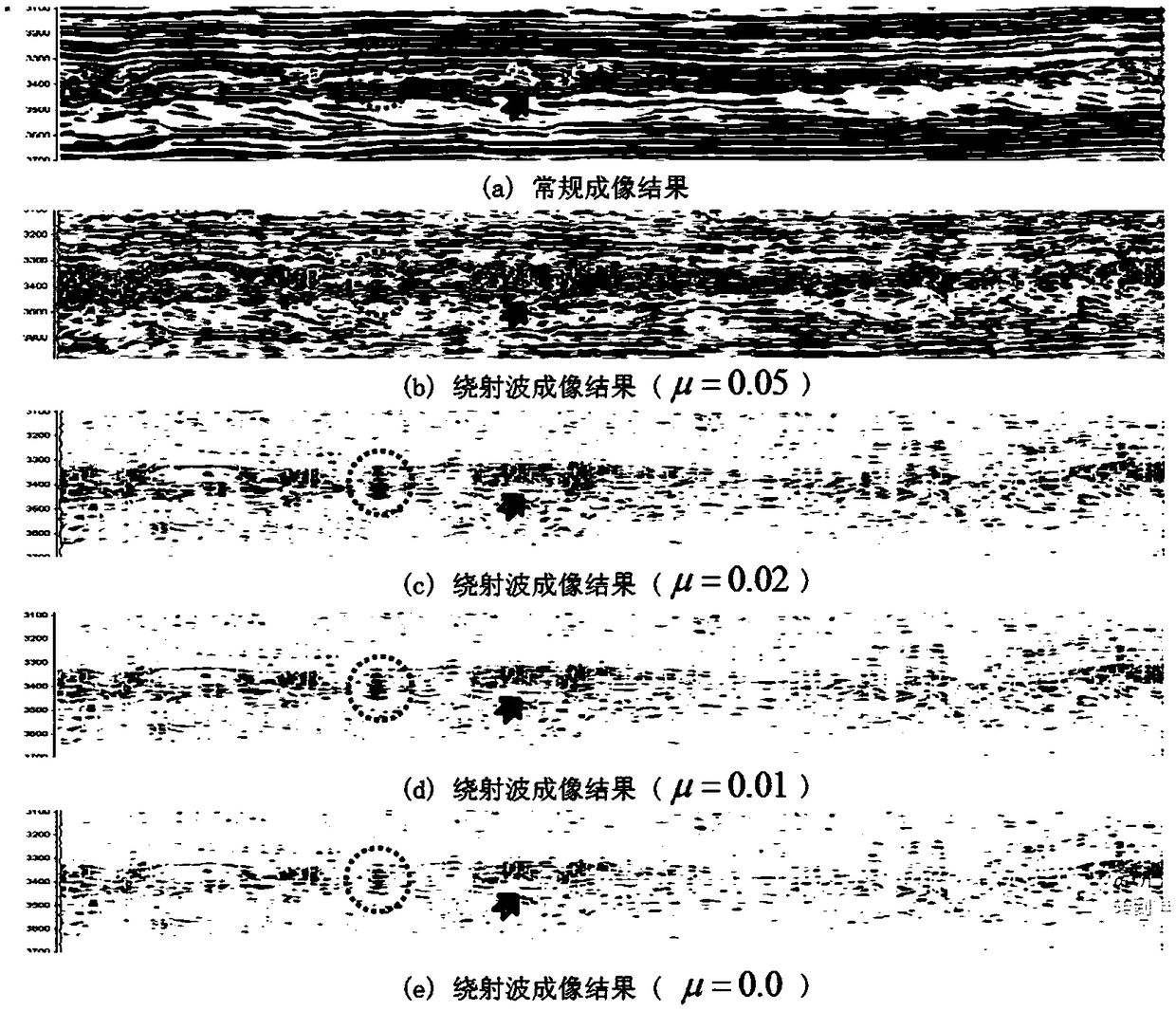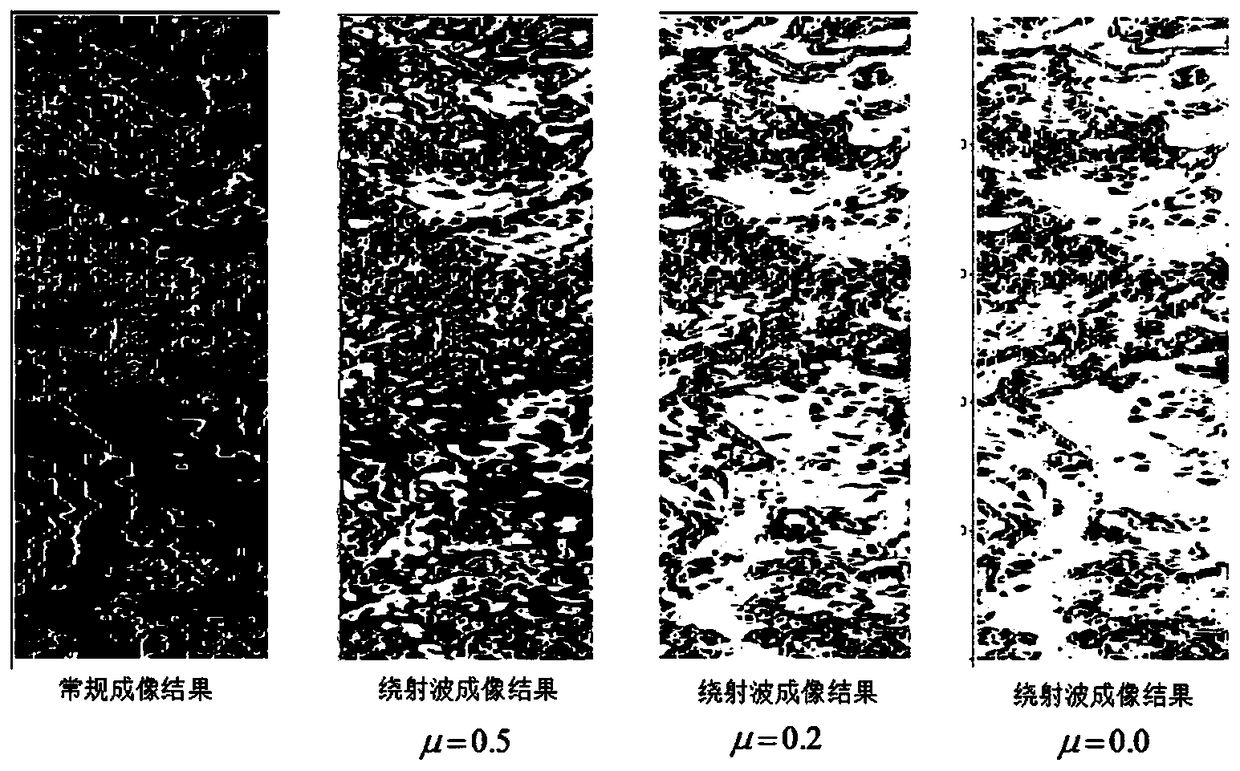Imaging gather based diffracted wave separation imaging method
An imaging gather and imaging method technology, applied in the field of diffraction wave imaging, can solve problems such as difficult to effectively separate pre-stack data, failure to obtain diffraction wave records, and large loss of diffraction waves, etc., to achieve enhanced stability and calculation Improved speed and imaging effect, high signal-to-noise ratio
- Summary
- Abstract
- Description
- Claims
- Application Information
AI Technical Summary
Problems solved by technology
Method used
Image
Examples
Embodiment Construction
[0060] The following will clearly and completely describe the technical solutions in the embodiments of the present invention with reference to the accompanying drawings in the embodiments of the present invention. Obviously, the described embodiments are only some, not all, embodiments of the present invention. Based on the embodiments of the present invention, all other embodiments obtained by persons of ordinary skill in the art without creative work, any modifications, equivalent replacements, improvements, etc., shall be included in the protection scope of the present invention Inside.
[0061] According to the diffraction wave separation imaging method based on imaging gathers of the present invention, the steps of the method are:
[0062] S1. According to the basic theoretical derivation and theoretical model research, a diffraction wave separation method based on imaging gathers is obtained;
[0063] S2. For subsequent correct interpretation and analysis, retain a cer...
PUM
 Login to View More
Login to View More Abstract
Description
Claims
Application Information
 Login to View More
Login to View More - R&D
- Intellectual Property
- Life Sciences
- Materials
- Tech Scout
- Unparalleled Data Quality
- Higher Quality Content
- 60% Fewer Hallucinations
Browse by: Latest US Patents, China's latest patents, Technical Efficacy Thesaurus, Application Domain, Technology Topic, Popular Technical Reports.
© 2025 PatSnap. All rights reserved.Legal|Privacy policy|Modern Slavery Act Transparency Statement|Sitemap|About US| Contact US: help@patsnap.com



